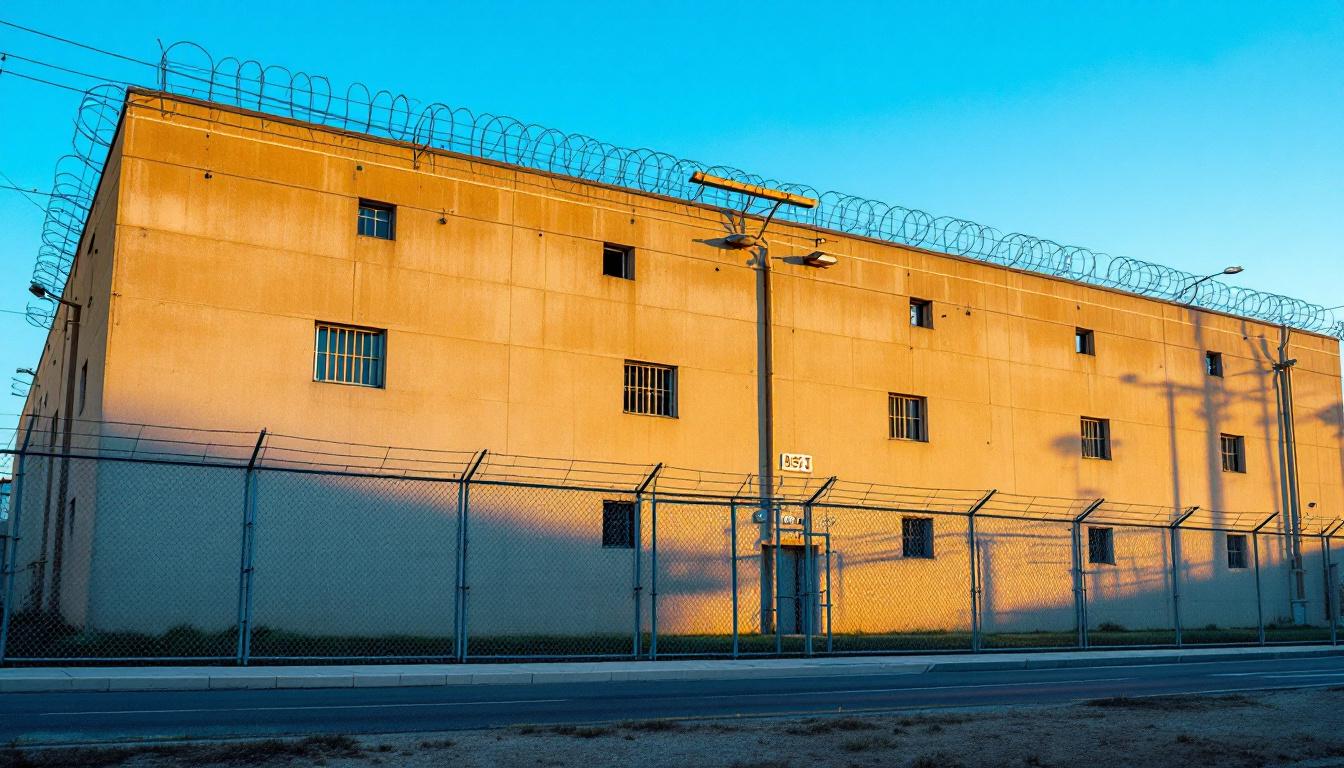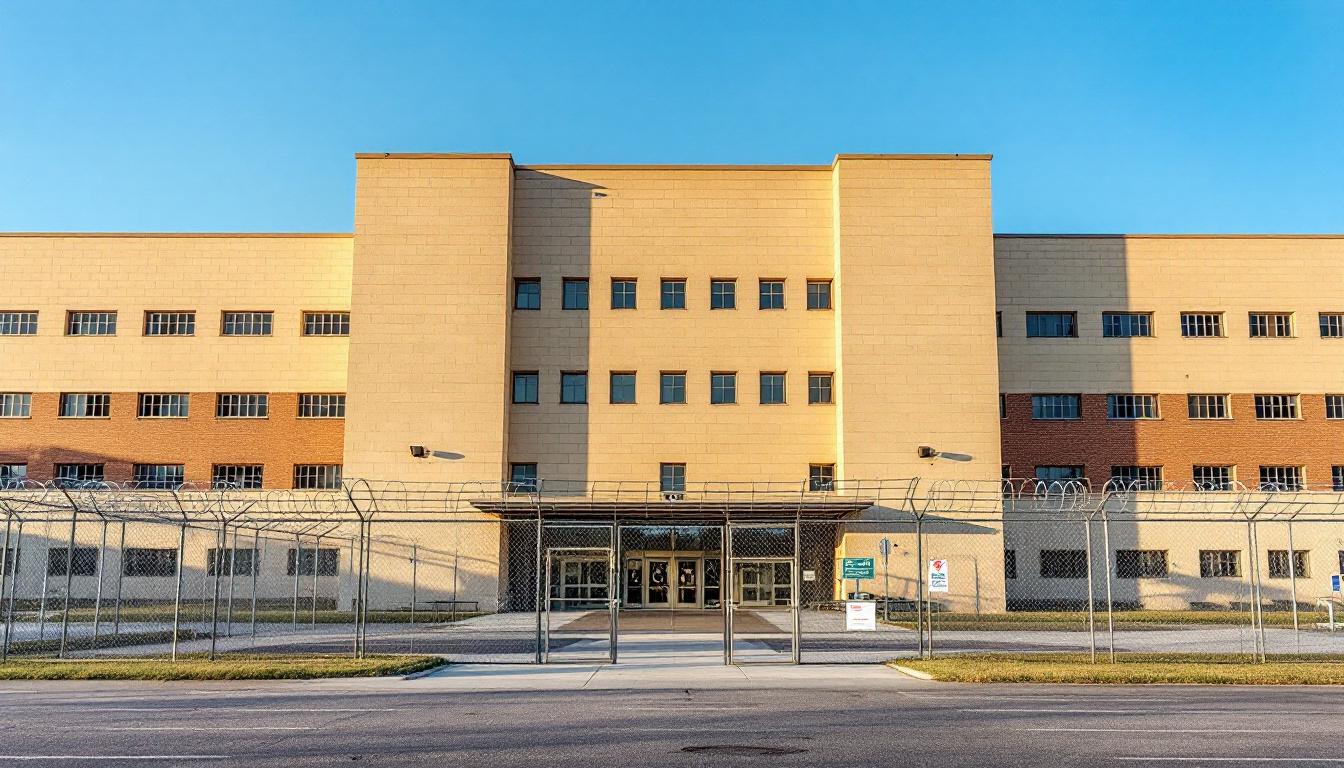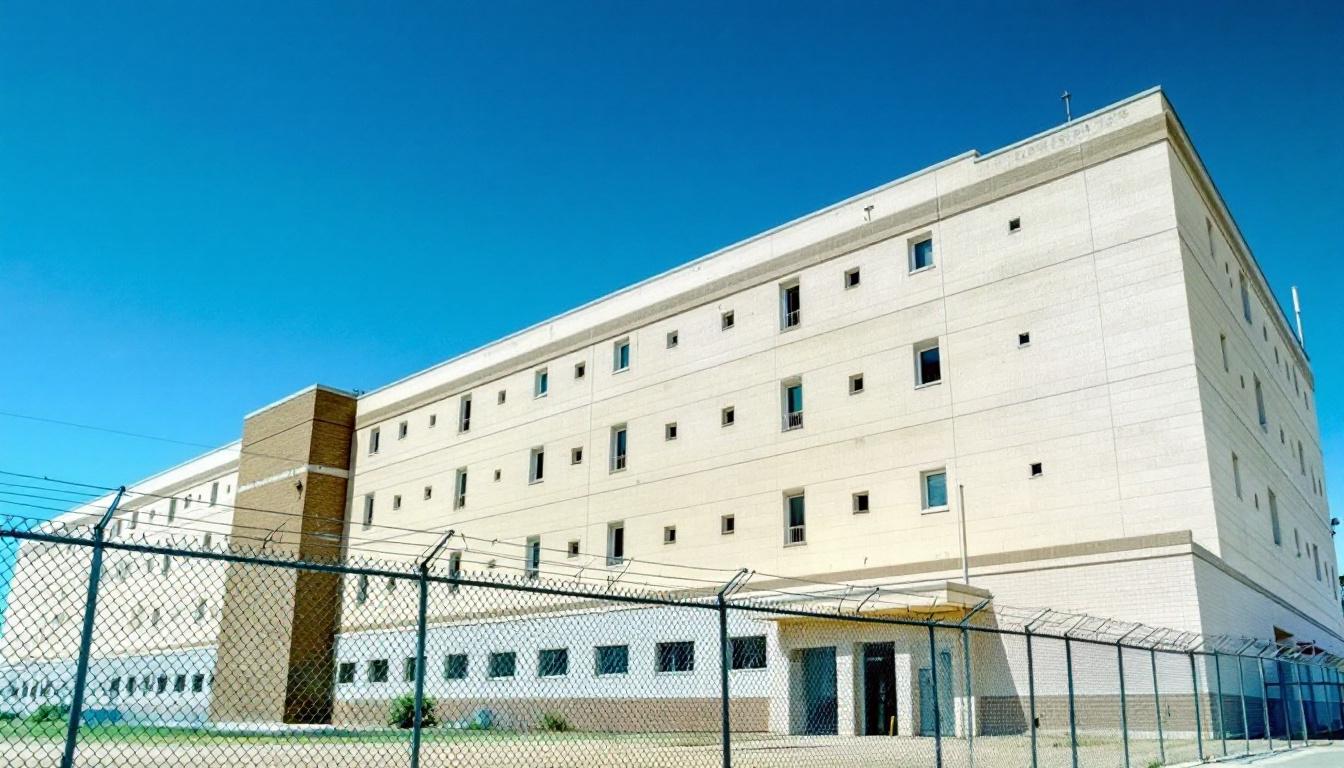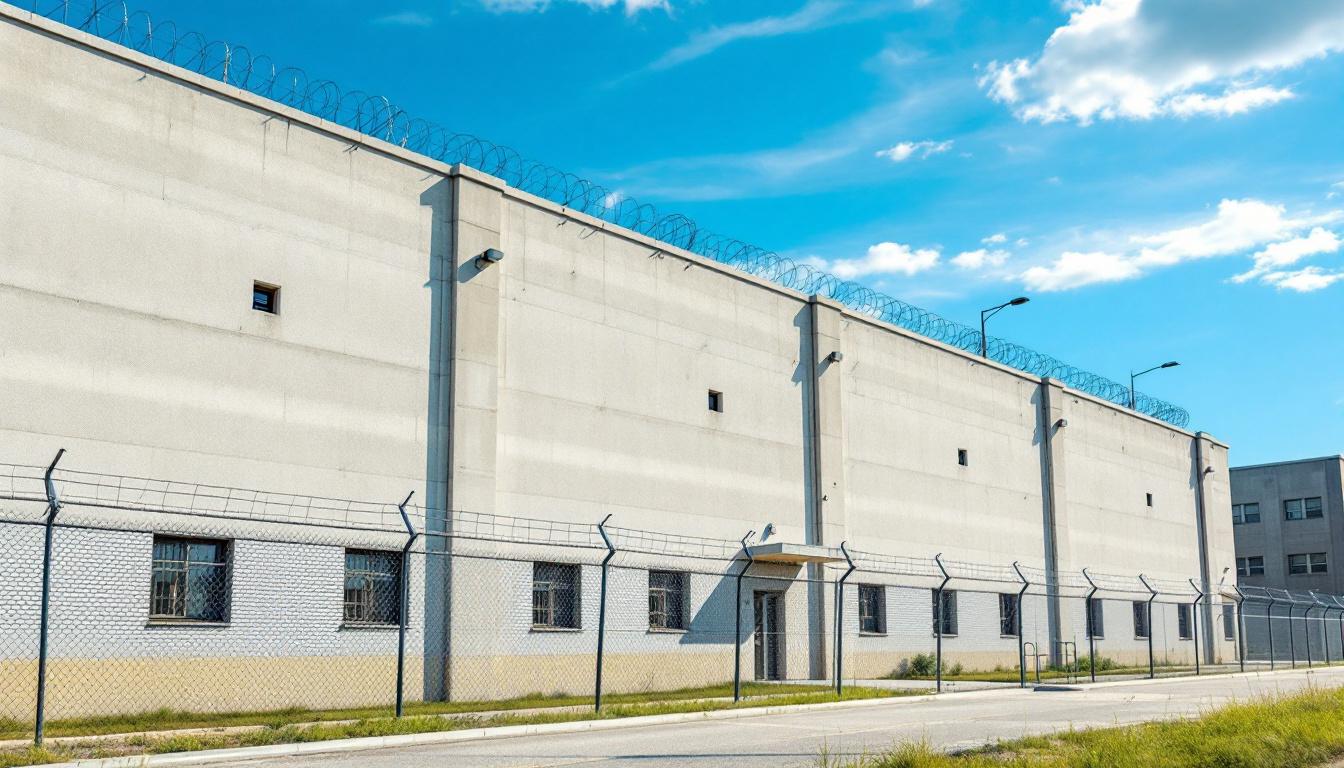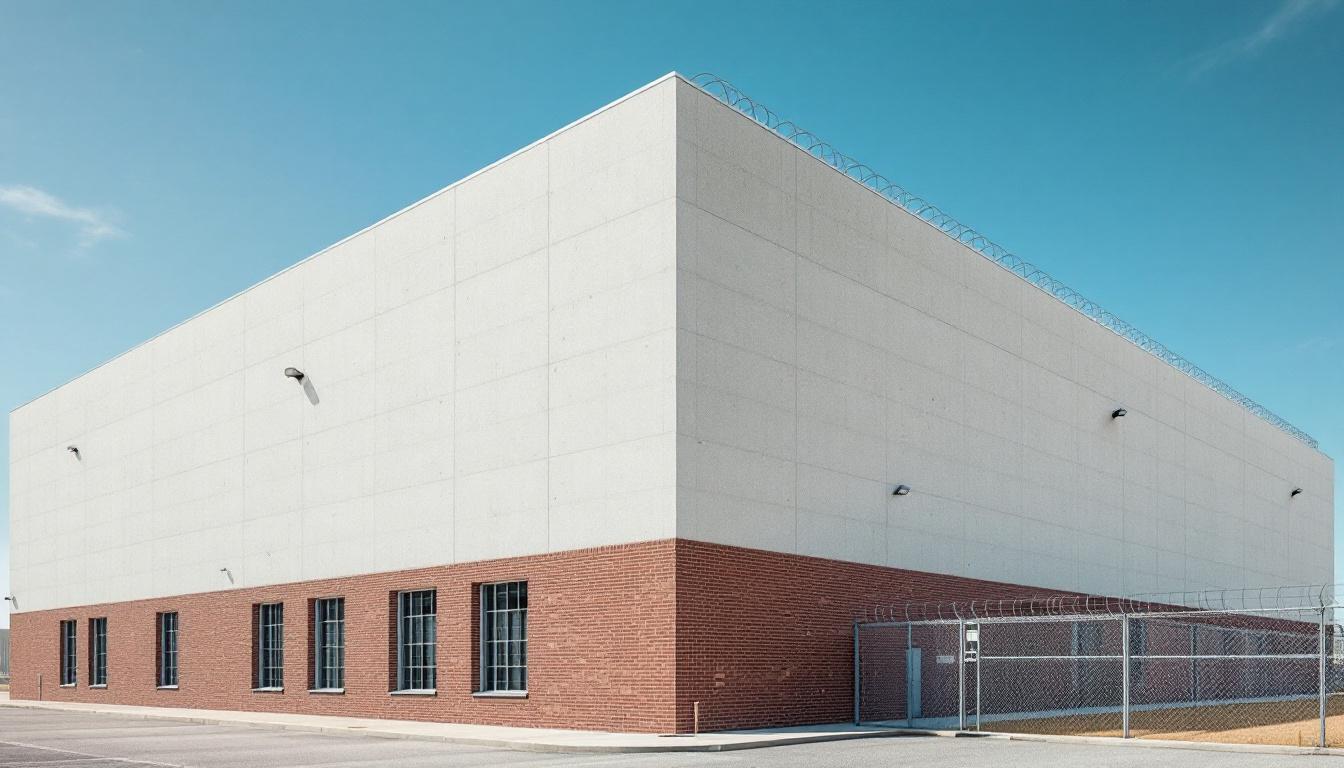
Quick Navigation
How to contact an inmate at Jennings Police Department
This comprehensive guide will walk you through how to connect with an inmate at Jennings Police Department. Follow the steps below to find an inmate and send letters and photos:
- Search for the inmate using our search tool below
- Create your account or log in to Penmate
- Write your message (up to 6,000 characters)
- Send instantly - inmates receive printed copies daily
Find an Inmate
Search for an inmate to start communicating today
Tip: You can search by first name, last name, or inmate ID number
To contact a person at Jennings Police Department start by searching for the person on the facility website. Perform a search by following these steps:
- Step 1: Enter their first name and last name into the search form and click "Search"
- Step 2: Locate their inmate record
- Step 3: Write down their Inmate ID and any housing information provided
Important! Be sure to enter the person's full name. Nicknames should not be used.
How to Send Messages to Inmates

You can use your phone or computer to send emails, letters, and photos to an inmate. Messages are sent electronically to inmate tablets or kiosks at the facility. If you would like to send a message, start by searching for an inmate at Jennings Police Department.
Sending Photos and Postcards

A great way to send love and support to a loved one at Jennings Police Department is to send photos and postcards. It only takes a few minutes to send photos from your phone and it makes a huge difference. You can also mail postcards with words of support and inspiration, or design your own postcard for special moments like birthdays and holidays.
Important! Be sure not to send any explicit photos or they may not be approved by the facility. You can also use a photo printing app like Penmate to make sure your photos are printed at the correct size (4x6 or 3x5) and are mailed according to the rules and regulations of Jennings Police Department.
Frequently asked questions about Jennings Police Department
-
How long does it take to deliver a message?
If you're sending an email message your letter is usually delivered within 24-48 hours. For messages sent via mail you should expect delivery within 3-7 days. All messages will need be approved by Jennings Police Department.
-
How much does it cost to send a message to Jennings Police Department?
You can send a message free using your phone or mail a message via USPS for the price of a $0.60 stamp and envelope. You can also purchase credits or e-stamps from services starting at $1.99.
-
What services can I use to contact an inmate at Jennings Police Department?
Penmate
You can use Penmate to send letters and photos to an inmate from your phone. It's an easy way to stay in touch during your loved one's incarceration. Use the inmate locator to find an inmate's location and contact information, then you can send messages within a few minutes.
Securus messaging
Securus may be another option for communicating with an inmate at Jennings Police Department. You can create a friends and family account and purchase credits to send messages. All messages will be reviewed and must be approved by the facility.
JPay
Some county jails and state prisons may support sending messages with JPay. You must register an account with the system, find your loved one, and purchase stamps to send messages. For some locations you can also attach photos.
Smart Jail Mail
You may also check if Smart Jail Mail is available at Jennings Police Department. Smart Jail Mail is operated by Smart Communications and has contracted with some state and county jails. After purchasing credits, your messages and photos are sent to the facility, printed out, and then handed out to your loved one.
-
What is the mailing address of Jennings Police Department?
Mailing address:
Jennings Police Department
5445 Jennings Station Rd
St. Louis, MO 63136
Phone: (314) 385-4672 -
What are the visiting hours at Jennings Police Department?
Visiting hours at Jennings Police Department vary by housing unit and security level. Generally, visits are scheduled on weekends and holidays, with some facilities offering weekday visits. Contact the facility directly at (314) 385-4672 or check their website for the current visiting schedule. Visits typically last 30-60 minutes and must be scheduled in advance.
-
What items are prohibited when sending mail to Jennings Police Department?
Prohibited items typically include: cash, personal checks, stamps, stickers, glitter, glue, tape, staples, paperclips, polaroid photos, musical or blank greeting cards, hardcover books, magazines with staples, and any items containing metal or electronics. Only send letters on plain white paper with blue or black ink. Photos must be printed on regular photo paper (no Polaroids). Always check with Jennings Police Department for their specific mail policies.
-
How do I send money to an inmate at Jennings Police Department?
You can send money to an inmate at Jennings Police Department through several methods: 1) Online using JPay, Access Corrections, or the facility's approved vendor, 2) Money orders mailed directly to the facility with the inmate's name and ID number, 3) Kiosks located in the facility lobby, or 4) Over the phone using a credit or debit card. Fees vary by method, typically ranging from $2.95 to $11.95 per transaction.
-
Can I schedule a video visit with an inmate at Jennings Police Department?
Many facilities now offer video visitation as an alternative to in-person visits. At Jennings Police Department, video visits may be available through services like Penmate, Securus Video Connect, GTL, or ICSolutions. Video visits typically cost $10-20 for 20-30 minutes and must be scheduled in advance. You'll need a computer or smartphone with a camera and reliable internet connection. Contact the facility for their specific video visitation policies and approved vendors.
-
What identification do I need to visit an inmate at Jennings Police Department?
All visitors must present valid government-issued photo identification such as a driver's license, state ID, passport, or military ID. Minors must be accompanied by a parent or legal guardian who can provide the minor's birth certificate. Some facilities require visitors to be on the inmate's approved visitation list, which may require a background check. Contact Jennings Police Department for specific ID requirements and visitor approval procedures.
-
How can I find out an inmate's release date?
To find an inmate's release date at Jennings Police Department, you can: 1) Use the online inmate search tool if available, 2) Call the facility's records department, 3) Contact the inmate's case manager or counselor, or 4) Have the inmate provide this information during a call or visit. For privacy reasons, some facilities only release this information to immediate family members.
Facility Overview
Contact Information
Jennings Police Department5445 Jennings Station Rd
St. Louis, MO 63136
Phone: (314) 385-4672

About Jennings Police Department
Nestled within the broader St. Louis metropolitan area, this MO correctional facility operates as an integral component of the region's criminal justice infrastructure, serving residents who require secure housing while navigating legal proceedings. The facility's approach to offender management emphasizes structured daily routines that may include educational opportunities, behavioral programming, and preparation for successful community reintegration.
Jennings Station Rd Jail, MO typically focuses on creating pathways for positive outcomes through various residents services that address both immediate needs and longer-term goals. Programming often includes substance abuse counseling, job readiness training, and educational support designed to help individuals develop skills that support successful transitions. The facility generally maintains connections with community organizations and social service agencies throughout the St. Louis area, recognizing that effective rehabilitation extends beyond the facility's walls and into the broader support networks that residents will encounter upon release.
Within Missouri's correctional landscape, this county jail represents the type of local facility that balances security requirements with rehabilitation-focused initiatives common throughout the Midwest region. Staff members typically work to maintain an environment where residents can access mental health resources, participate in structured activities, and receive guidance that may help reduce recidivism rates. The facility's role extends beyond simple detention, encompassing efforts to address underlying issues that may have contributed to criminal behavior while preparing individuals for meaningful participation in their communities.
Programs & Services
Educational advancement through adult basic education and comprehensive learning initiatives forms the cornerstone of rehabilitation efforts, emphasizing the transformative power of knowledge acquisition and skill development. These multifaceted initiatives typically operate under a philosophy that recognizes education as a fundamental pathway to successful community reintegration, fostering both intellectual growth and practical competency among residents. The facility's approach often encompasses a holistic framework where learning opportunities are carefully structured to address individual educational deficits while simultaneously building confidence and self-efficacy.
Academic programming may deliver foundational literacy and numeracy instruction through adult basic education courses, enabling residents to achieve educational milestones that were previously unattainable. These educational initiatives often include GED preparation classes and basic computer literacy training, providing essential tools for future employment opportunities. Additionally, vocational training components typically focus on developing marketable skills in areas such as maintenance, food service, and basic construction trades, allowing residents to acquire hands-on experience that translates directly to employment prospects upon release.
Therapeutic interventions addressing substance abuse represent another critical dimension of the facility's comprehensive approach, as these initiatives may deliver evidence-based treatment modalities designed to address underlying addiction issues. Support services often include work release programs that enable eligible residents to maintain employment in the community while serving their sentences, fostering continuity in their professional lives. Additionally, practical services such as laundry facilities ensure that residents can maintain personal hygiene and dignity, supporting their overall well-being and preparation for successful community reintegration.
Daily Life & Visitation

The rhythmic cadence of scheduled activities at present forms the backbone of residential life, with structured routines that actively guide residents through each day from early morning wake-up calls to evening lockdown procedures. This predictable framework typically includes designated times for meals, recreation, work assignments, and various programming opportunities that deliver consistency and purpose to daily experiences. Generally, residents find that these established patterns help create a sense of normalcy and forward momentum during their time at the facility.
Living accommodations usually consist of shared housing units where residents are assigned based on classification levels and security requirements. Additionally, these living spaces typically provide basic furnishings and personal storage areas, while common areas may offer opportunities for social interaction during designated periods. Meals are generally served in communal dining areas at scheduled times, with menu planning that aims to meet basic nutritional needs while accommodating dietary restrictions when possible.
While maintaining security protocols, the facility often provides various recreational activities that may include outdoor exercise periods, indoor fitness opportunities, and organized sports when weather and staffing permit. Work assignments typically range from kitchen duties and facility maintenance to laundry services, offering residents the chance to develop job skills and contribute to daily operations. Additionally, visitation policies usually allow for scheduled family visits and phone calls, helping residents maintain important connections with their support systems outside the facility, while commissary services may provide access to personal items and snacks that can make daily life more comfortable.
Ready to Connect?
Start communicating with your loved one today
Search for an Inmate



